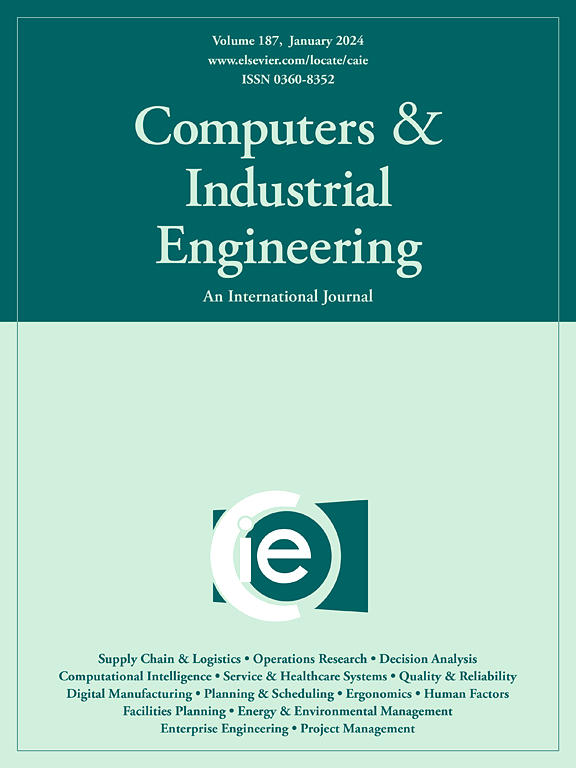医疗废物收集中动态区间多目标车辆路径问题的两阶段调度算法
IF 6.7
1区 工程技术
Q1 COMPUTER SCIENCE, INTERDISCIPLINARY APPLICATIONS
引用次数: 0
摘要
合理调度医疗废物收集车辆,可以降低大规模疫情防控成本,提高收集效率。考虑到车辆速度的不确定性和客户需求的动态变化,以及各个处置点处置能力的差异,建立了医疗废物收集的多目标、多行程、多中间堆场车辆路径模型。在考虑车辆容量和车辆数量约束的情况下,通过确定每辆车辆的最佳收集路线和处置地点,使成本和感染风险最小化。为了求解该模型,提出了一种新的两阶段调度方法。在静态优化阶段,设计了一种知识引导区间多目标洗牌青蛙跳跃算法,获得初始采集路径。引入区间数的可能性度对速度区间进行单独的编解码,并实现区间非支配排序。在动态优化阶段,采用针对问题的邻域搜索方法,快速响应动态采集需求。在一个真实的医疗废物收集场景和8个合成实例上进行了系统的实验研究。与现有算法的比较结果表明,该算法生成了一组成本和感染风险较低的区间非支配调度。本文章由计算机程序翻译,如有差异,请以英文原文为准。
A two-stage scheduling algorithm for dynamic interval multi-objective vehicle routing problem in medical waste collection
Proper scheduling of medical waste collection vehicles can reduce the cost of large-scale epidemic prevention and control, and improve the collecting efficiency. In this work, a multi-objective, multi-trip and multi-intermediate depot vehicle routing model for collecting medical wastes is developed, accounting for the uncertainty of vehicle speed and dynamic changes in customer requirements, as well as the differences in disposal capacity of various disposal sites. The cost and infection risk are minimized through the determination of the optimal collecting route and disposal site for each vehicle, while considering the constraints of vehicle capacity and number of vehicles. To solve the model, a novel two-stage scheduling method is proposed. In the stage of static optimization, a knowledge-guided interval multi-objective shuffled frog leaping algorithm is designed to obtain the initial collecting routes. The possibility degree of interval number is introduced to perform individual encoding and decoding for speed intervals, and also implement the interval non-dominated sorting. In the stage of dynamic optimization, a problem-specific neighborhood search method is adopted to provide a quick response to the dynamic collecting requirements. Systematic experimental studies are implemented on a real-world medical waste collection scenario and eight synthetic instances. Comparison results with state-of-the-art algorithms suggest that the proposed algorithm generates a set of interval non-dominated schedules with lower cost and infection risk.
求助全文
通过发布文献求助,成功后即可免费获取论文全文。
去求助
来源期刊

Computers & Industrial Engineering
工程技术-工程:工业
CiteScore
12.70
自引率
12.70%
发文量
794
审稿时长
10.6 months
期刊介绍:
Computers & Industrial Engineering (CAIE) is dedicated to researchers, educators, and practitioners in industrial engineering and related fields. Pioneering the integration of computers in research, education, and practice, industrial engineering has evolved to make computers and electronic communication integral to its domain. CAIE publishes original contributions focusing on the development of novel computerized methodologies to address industrial engineering problems. It also highlights the applications of these methodologies to issues within the broader industrial engineering and associated communities. The journal actively encourages submissions that push the boundaries of fundamental theories and concepts in industrial engineering techniques.
 求助内容:
求助内容: 应助结果提醒方式:
应助结果提醒方式:


